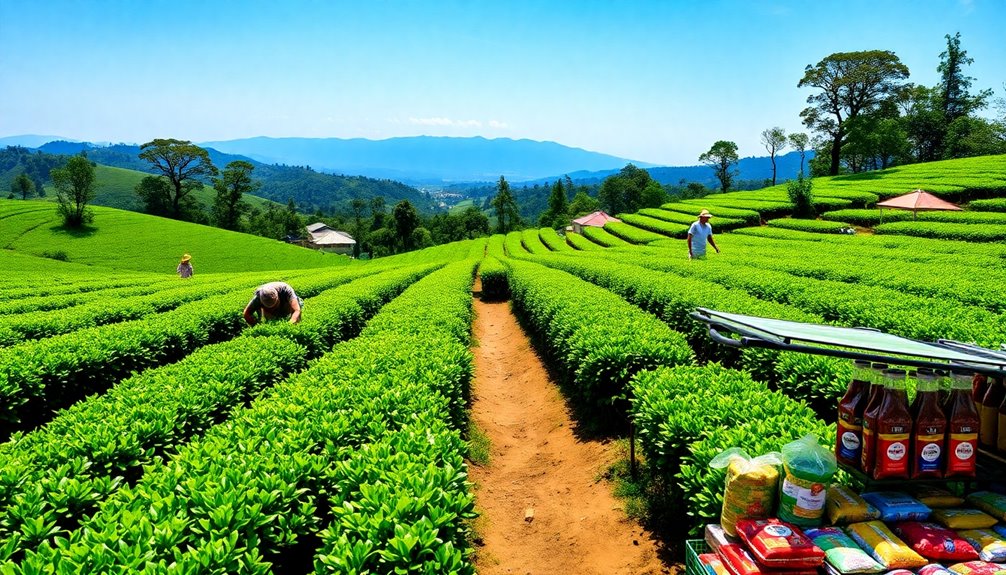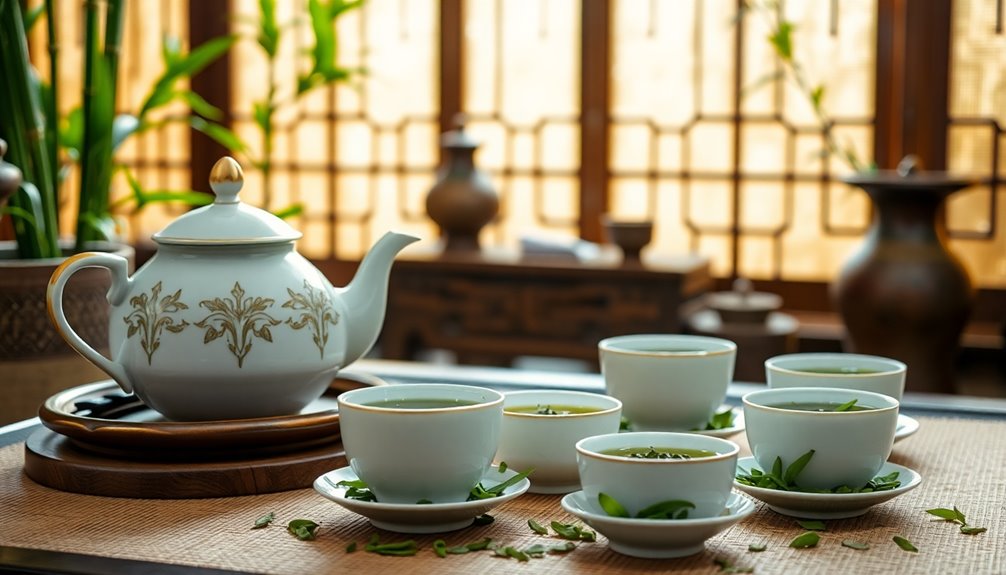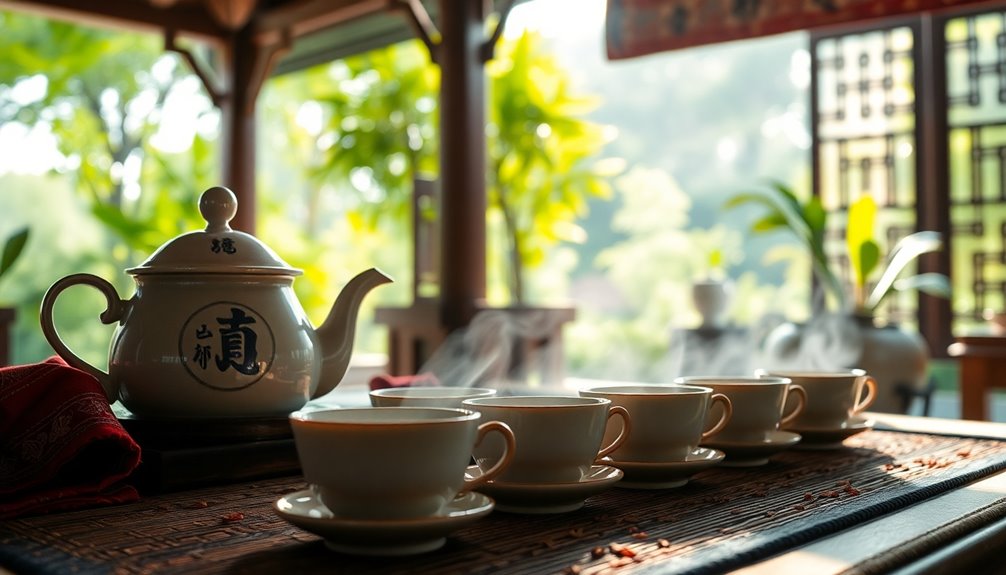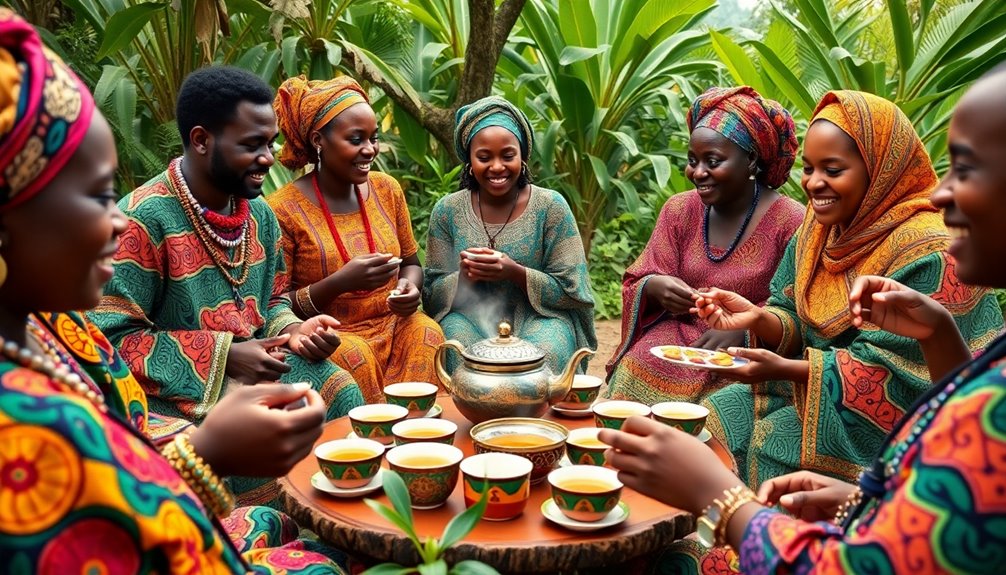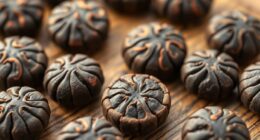British afternoon tea became an iconic ritual in the 1840s when Anna, Duchess of Bedford, sought a way to ease her mid-afternoon hunger. What started as small gatherings grew into fashionable social events, especially after Queen Victoria endorsed the practice. This lovely tradition combines relaxation with scrumptious treats like sandwiches, scones, and pastries. It symbolizes British culture and showcases elegance, especially among the upper class. As time went on, afternoon tea also influenced global tea culture and evolved into a beautiful way to connect with friends. Want to know how its popularity transformed over the years? There's more to discover!
Key Takeaways
- Afternoon tea originated in the 1840s by Anna, Duchess of Bedford, to address mid-afternoon hunger and social needs among the upper class.
- Queen Victoria's endorsement transformed afternoon tea into a prestigious social event, highlighting British cultural refinement and elegance.
- The ritual featured dainty sandwiches, scones, and pastries, emphasizing presentation and etiquette, reflective of social status in Victorian society.
- Initially exclusive to the upper class, afternoon tea evolved with variations, making it accessible to middle and lower classes through adaptations like high tea.
- Today, afternoon tea serves as a celebration of British culture, fostering social connections, appreciation for culinary arts, and cultural exchange.
Introduction

As you sip your tea and nibble on finger sandwiches or scones, you're participating in a custom that has influenced dining around the world.
Many cultures have adopted similar rituals, making Afternoon Tea an iconic experience.
Royal Endorsement in the 1840S

In the 1840s, the tradition of Afternoon Tea blossomed thanks to Anna, the seventh Duchess of Bedford, who sought a solution for her mid-afternoon hunger pangs. She began hosting small gatherings with friends to enjoy tea and light snacks, bridging the long gap between lunch and dinner.
This Afternoon Tea ritual quickly gained popularity among the upper class, transforming her intimate events into fashionable social occasions.
As the Duchess's gatherings grew, it became stylish for upper-class women to wear elegant gowns, gloves, and hats. The atmosphere was lively, filled with laughter and conversation, making it a delightful way to spend the afternoon.
The royal endorsement of this tradition significantly boosted its status. Though Queen Victoria embraced Afternoon Tea later in the 1800s, her approval of the Duchess's early efforts brought attention to the practice, helping it evolve from a simple snack to a sophisticated social event.
With royal endorsement, the Afternoon Tea ritual not only flourished but also influenced tea culture in Britain and beyond.
Today, you can still feel the excitement of those early gatherings whenever you enjoy a lovely cup of tea and some treats with friends.
Cultural Significance of Tea
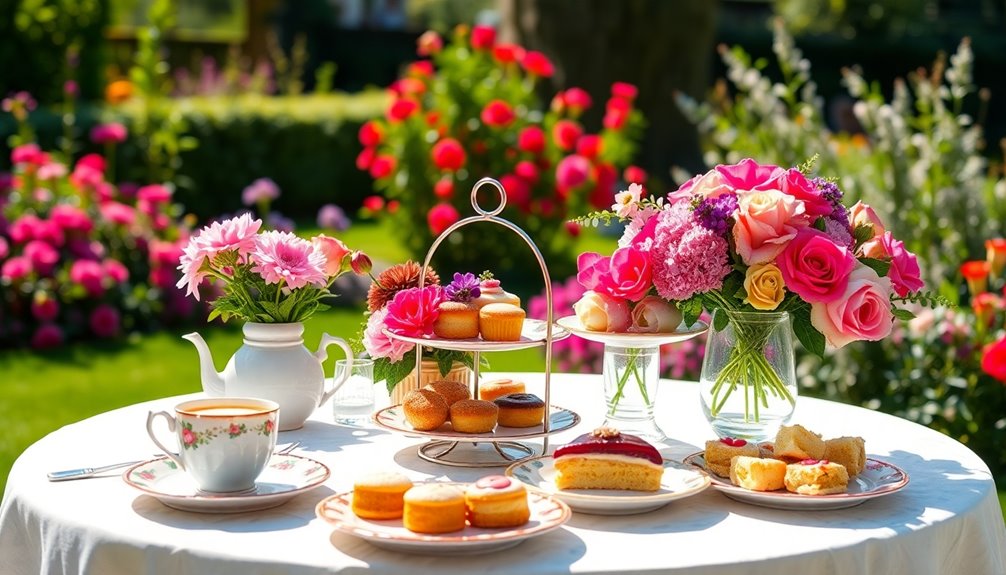
Afternoon tea is more than just a meal; it's a cherished social ritual that embodies British culture. This delightful tradition began in the early 1800s as a way to ease hunger between meals. Over time, it transformed into a fashionable social event, especially among the upper class.
You might be surprised to learn that Queen Victoria played a key role in making afternoon tea popular, favoring treats like pound cake that raised its status even higher.
In British society, afternoon tea isn't just about sipping tea; it's a way to connect with friends and family in an elegant setting. When you participate in this ritual, you're embracing English customs that promote relaxation and enjoyment. The beautiful table settings, complete with fine china and dainty sandwiches, serve as symbols of refinement and social status.
Moreover, tea's global appeal, being the second most consumed beverage after water, shows its cultural significance. Different countries have their own tea traditions, but the essence of gathering over a cup unites us all.
Influence of Victorian Society

Victorian society played a transformative role in shaping the afternoon tea tradition. During the 19th century, this delightful ritual became a popular social event among the upper class, thanks to its formalized structure and elegant atmosphere. Queen Victoria herself endorsed afternoon tea in the late 1800s, turning it into a fashionable pastime that showcased British culture.
When you attend an afternoon tea gathering, you'd notice how women of Victorian society dressed in their finest gowns, gloves, and hats, all reflecting their social status. This wasn't just about sipping tea; it was an occasion filled with dainty sandwiches, scones, and pastries. The variety of treats highlighted the era's focus on presentation and abundance.
The emphasis on etiquette and social gatherings transformed afternoon tea into a structured event. It wasn't merely a meal; it became a way to demonstrate class distinctions and cultural refinement.
Attending such a gathering was an exciting way to connect with others, share delicious food, and enjoy the delightful company of friends. So, whether you're hosting or attending, remember that afternoon tea is about more than just tea; it's a cherished tradition steeped in history!
Social Class Disparities
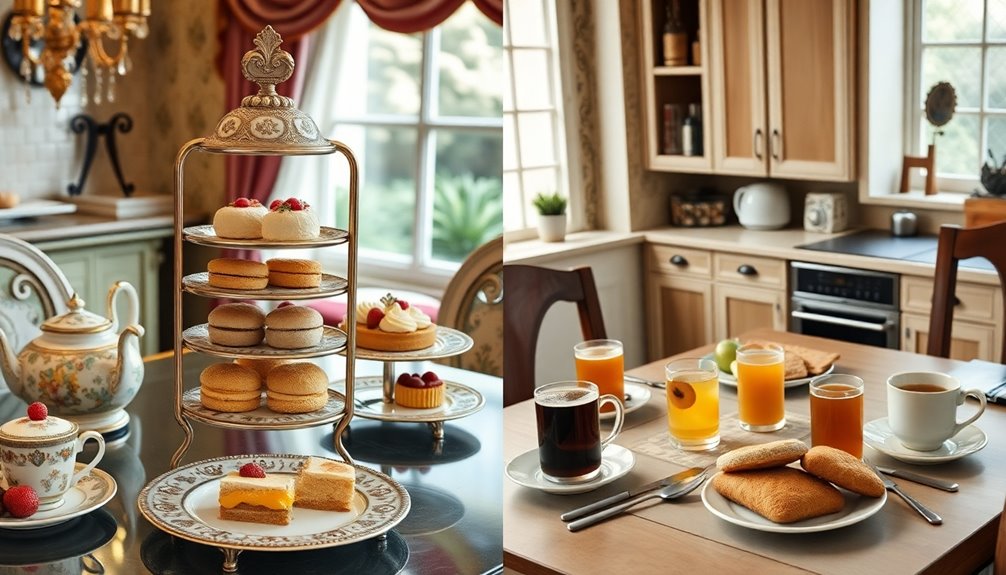
Social class disparities played a significant role in the evolution of afternoon tea, highlighting the differences in customs and dining practices across British society. Afternoon tea began as a special event for upper-class society women in the early 19th century. It was a time for them to gather, sip tea, and enjoy fancy snacks.
Meanwhile, high tea, often confused with afternoon tea, served a different purpose. It was a hearty meal for the middle and lower classes, usually eaten later in the evening. This distinction shows how social class disparities shaped dining experiences.
As afternoon tea grew in popularity, it became a symbol of refinement and status. The rich created elaborate tea parties, while those of lower social standing adapted the tradition to fit their circumstances, developing their own simpler versions.
By the late 19th century, tea dances emerged, making afternoon tea more accessible to the middle class. These events blurred the lines between social classes, but it still maintained its unique traditions.
Ultimately, while afternoon tea became an iconic ritual for the upper class, it also revealed the diverse ways that British society experienced and celebrated this delightful custom.
Practical Applications
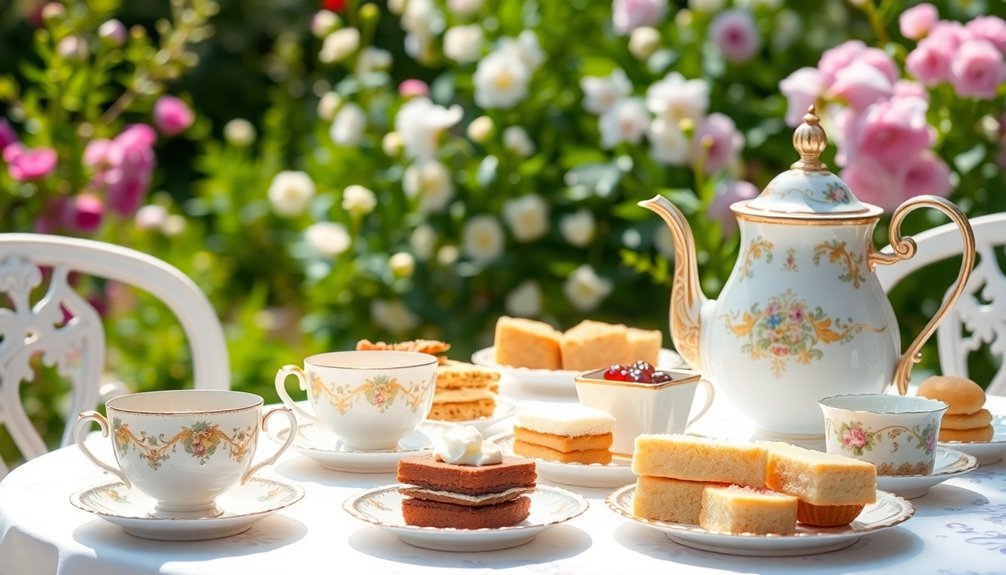
Engaging in afternoon tea isn't just about enjoying food and drink; it's a chance to celebrate British culture and foster a sense of community.
Frequently Asked Questions
Why Is Afternoon Tea a British Tradition?
Afternoon tea's a British tradition because it offers a charming social experience, bridging meals with elegance. You savor delightful sandwiches, scones, and fine teas, creating cherished moments with friends and family in a refined setting.
Why Has Afternoon Tea Become so Popular?
Afternoon tea's popularity stems from its blend of relaxation and socialization. You enjoy a chance to unwind with friends, savor delightful treats, and partake in a cherished tradition that evokes a sense of elegance and community.
Why Did Tea Become so Popular in Britain?
Tea became popular in Britain due to its availability and social aspects. You enjoy it not just for its taste but for the connections it fosters, making it a staple in daily life and leisure.
What Is the British Afternoon Ritual?
The British afternoon ritual involves enjoying a delightful spread of sandwiches, scones, and pastries, paired with tea. You'll find it's a perfect way to relax, socialize, and savor a moment of elegance in your day.
Conclusion
In conclusion, British afternoon tea isn't just about sipping tea and nibbling on scones; it's a delightful tradition that brings people together. With its royal roots and cultural importance, this ritual has stood the test of time. Whether you're enjoying it at home or in a fancy tearoom, remember to take a moment to appreciate the flavors and company. So, gather your friends, brew some tea, and create your own afternoon tea memories!

